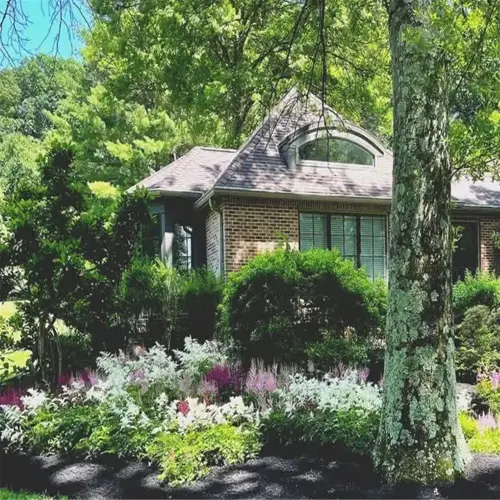How to Store Bulbs: Expert Guide for Healthy Blooms

Written by
Tina Carter
Reviewed by
Prof. Martin Thorne, Ph.D.Storing Bulbs: After foliage turns yellow (before frost), remove with all surrounding soil
Cure bulbs for one to three weeks in [a ventilated space] at 60-70°F
Use peat moss or vermiculite in breathable containers
Store most bulbs at 35-50°F, tropical bulbs at (60°F +)
Check monthly, dust with a fungicide if any start to rot
Do not use plastic containers; they trap humidity and ethylene gas.
Article Navigation
It is important to first understand how to properly store bulbs and their specific needs. Tropical bulbs, like cannas, need storage above 60°F. For hardy bulbs, like tulips, they prefer 35-45°F. Storing bulbs outside of their stated range runs the risk of developing mold or sprouting too soon. I have lost entire lot of bulbs by careless mixing of varieties in one bin.
Ethylene gases released from neighboring apples or tomatoes will hasten the decay process. So it's best to store your bulbs in an area with no fruit at all. In my greenhouse, I have different cabinets for bulbs and produce. This simple separation saved my rare collection of dahlias last winter.
Storage modifications are based on regional climate. If you live in a warm climate like Zone 9, store pre-cooled bulbs in the refrigerator. Use a container that breathes, and cardboard boxes are a better choice than nails. I once had a client lose gladiolus corms because the moisture that developed in Ziploc bags did not escape.
Rotting occurs rapidly in humid conditions. Inspect bulbs monthly. If there is mold, gently brush it off with a dry toothbrush. Discard any bulbs with soft spots. Shrivels but firm? Place them in damp peat moss for 48 hours to rehydrate before planting!
Ideal Storage Conditions & Materials
Deciding between peat moss and vermiculite depends on the needs of your bulbs. Peat moss retains just enough moisture for dahlias, but the air spaces created by vermiculite will keep your gladiolus corms from rotting. I keep both on hand and even last season, switching to vermiculite saved a batch of crocosmia bulbs that were mushy.
Temperature is more relevant than you think. Tropical bulbs, like cannas, require a temperature range of 50-60°F, while tulips need to stay just below freezing at 35°F. These flowers cannot be stored together. A client lost rare heirloom tulips in a warm garage when they blindly placed them with their elephant ears.
Plastic bins can be dangerous. They anchor ethylene gas, produced by microbes in the remaining soil in the pots, increasing decay. Cardboard is more breathable. Use newspaper to line boxes for extra protection. I learned this the hard way after a favorite Dahlia tuber rotted in a closed tub.
Ensure that each batch is marked. I use waterproof tags with the name of the bulb, date of harvest, and target temperature. If it's a mixed lot, I color-code the lids or containers with stickers. My color-code system is blue for cold-hardy bulbs, and red for tropical. This is a guard against mistakenly checking frost-tender bulbs in January after they have just been checked in February.
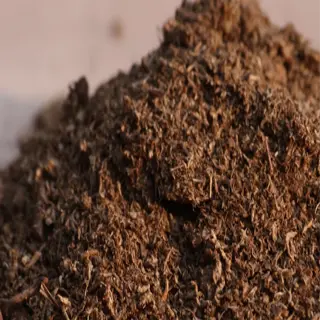
Peat Moss
- Moisture Control: Retains 20-30% humidity without waterlogging
- Acidity: Natural pH of 3.5-4.5 inhibits fungal growth
- Application: Layer 2-3" between bulbs in cardboard boxes
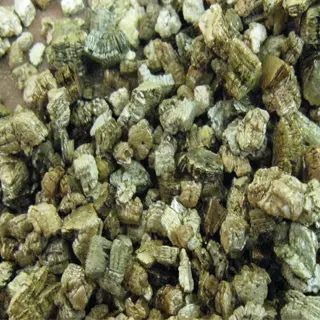
Vermiculite
- Airflow: 50% more porous than sawdust
- Thermal Insulation: Maintains stable temps for tropical bulbs
- Usage: Fill plastic-free containers halfway for gladiolus corms

Shredded Paper
- Cost-Effective: Recycled newspaper/mail reduces material costs
- Breathability: Allows 30% more airflow than plastic wraps
- Ideal For: Short-term storage of daffodils and tulips
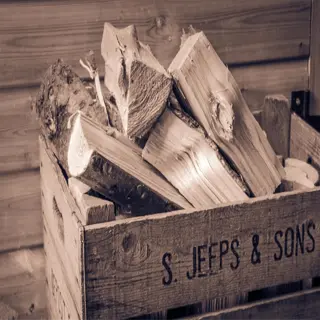
Wooden Crates
- Durability: Withstands 50+ lbs of bulb weight
- Ventilation: Natural slatted design prevents moisture buildup
- Best For: Large collections of canna or dahlia tubers
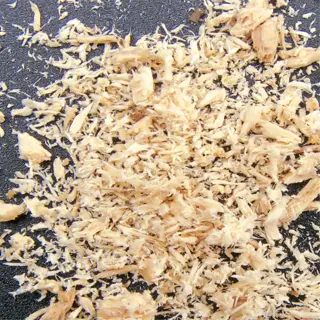
Sawdust
- Insulation: Maintains temps within 5°F (3°C) of target range
- Caution: Requires kiln-dried variety to prevent mold
- Usage: Mix with peat moss for moisture-sensitive gladiolus
Optimal Timing for Digging Bulbs
Tulips can survive light frost and are good down to 28°F. However, tropical cannas need to be dug the minute the temperature drops below 40°F. I speak from experience; I lost my canna collection because of an unexpected early October chill. Be sure to verify the frost limits of your type of bulb; there is not an across-the-board policy for all bulbs either.
Allow foliage to turn 50% yellow before you dig. Green leaves continue to feed the bulb. Rushing this process can starve next year's flowers. I had a client last season who dug their dahlias too early, and their flowers were half the size they normally produce in the spring. It is important to be patient.
Gardeners in Zone 3 should begin digs after the first light frost. Gardeners in Zone 9, on the other hand, should begin weeks before frost threatens. Microclimates are also worth adjusting for. A sheltered backyard warms faster than an open field. My coastal clients dig 10 days later than inland clients.
If bulbs are dug too early they are often shriveled and weak. Crown foliage should be allowed to die back naturally unless there is a chance of a hard freeze. I once saved my gladiolus by covering them with burlap for three more days, and when I dug the corms the additional time completely plumped them.
Foliage Monitoring
- Wait 7-10 days after foliage yellows for nutrient absorption
- Cut stems to 2-3" once completely dry
- Avoid watering 14 days pre-digging to prevent rot
Frost Preparation
- Track 10-day forecasts for first frost dates
- Emergency dig if temps drop below 25°F (-4°C)
- Cover plants with burlap if digging delayed
Tool Sanitization
- Disinfect tools with 10% bleach solution between varieties
- Sharpen edges monthly during digging season
- Dry metal surfaces to prevent rust formation
Curing Windows
- Tulips/Daffodils: 3-day air drying
- Dahlias: 7-day inverted drying
- Cannas: 14-day warm curing (70°F (21°C))
Labeling Protocol
- Waterproof Tags: Use vinyl labels resistant to moisture
- Details Included: Species, digging date, storage location
- Color Coding: Assign hues to bulb types for quick identification
Step-by-Step Curing Process
Tropical bulbs, for example, cannas, require a 14-day cure at 70-80°F, while hardy bulbs, such as tulips, completely dry in as little as 3 days at a temperature of 60°F. When I rushed this stage it cost me a rare collection of ginger lilies, with half of the rhizomes molded before they had adequate drying time.
Airflow inhibits deadly mold! Use either mesh screens or slatted wood racks, or something similar, to place your bulbs, keeping them 2 inches apart. I even rotate mine twice a day to ensure drying on all sides! A client recently lost 30 gladiolus corms, simply because he stacked them in a sealed crate. Airflow is important!
Thick-skinned bulbs require storage environments of 40-50% humidity. An excellent option to use is silica gel packs with tulips in cardboard boxes. When storing thin-skinned caladiums, you can add slightly damp sphagnum moss. I keep my hygrometer from my workshop handy because once when I had a 10% spike in humidity, it ruined my prize batch of dahlias.
Storing too early is an invitation for disaster. You will want to test the neck of the bulb; it should snap cleanly, not bend. There was a time when I stored daylilies too early. About three weeks later I was left smelling the stench of mush. Wait until the surface feels papery, like appreciably antiquated parchment, and then box them up.

Mesh Screens
- Air Circulation: Allows 360° airflow around bulbs
- Capacity: Holds 15-20 medium bulbs per sq ft
- Material: Rust-proof galvanized steel preferred

Cardboard Boxes
- Absorption: Soaks up residual moisture effectively
- Replacement: Discard after 2-3 uses to prevent mold
- Modification: Punch ventilation holes in sides
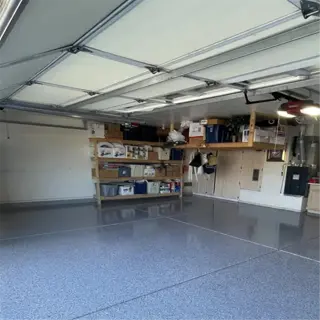
Garage Space
- Temperature Stability: Maintains consistent 60-75°F range
- Security: Protects from rodents/pests
- Layout: Keep 12" clearance from walls

Dehumidifier
- Capacity: 30-pint/day minimum for 200 sq ft areas
- Settings: Maintain 40-50% RH during curing
- Maintenance: Empty tank twice daily
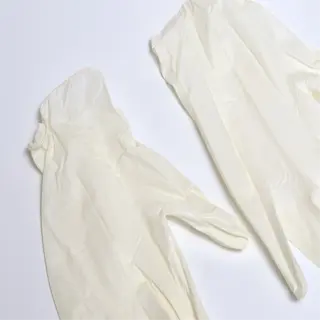
Latex Gloves
- Protection: Prevents oil transfer from hands
- Durability: Nitrile material resists punctures
- Hygiene: Change every 15 bulb handlings
How to Store Specific Bulb Types
Tropical bulbs (like cannas) grow best when stored at 50-60°F; hardy tulips live at just above freezing, around 35°F. I had once stored elephant ears and daffodils together but had gotten the tropical bulb temperature all wrong- those tropical bulbs rotted within weeks. I recommend you have separate bins and label the temperature range clearly. Trust me to avoid a costly mistake!
Tropical/dahlia tubers like slightly damp peat moss, but let them dry out for 7 days first, because if they stay too moist they will mold. A client's tubers split last year because she over-dried. We want balance. Moisture can be tested by taking a handful of the tubers and squeezing them, they should crumble apart if the moisture is right (not clump together).
Gladiolus corms with thick skins can be transported in open mesh bags. Delicate ranunculus should be packaged in cardboard boxes lined with vermiculite. I have lost a rare batch of bulbs in breathable sacks, they shriveled. Their ventilation must replicate, as best as possible, the bulbs' natural protective layer.
Label with more than names; label with harvest dates and preferred humidity. Colored stickers are useful for mixed batches: blue for "cold," red for "tropical" - I learned this one spring when a faded marker made the winnowing process a challenge. Use waterproof tags to prevent that.

Perforated Plastic Bins
- Airflow: 1/4" holes spaced 2" apart
- Capacity: Holds 25-30 medium bulbs
- Best For: Gladiolus and crocosmia corms

Breathable Fabric Bags
- Material: 100% organic cotton
- Reusability: Washable up to 10 cycles
- Ideal For: Dust-sensitive dahlia tubers
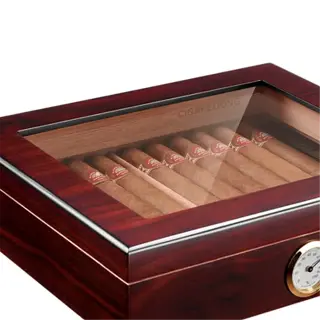
Wooden Cigar Boxes
- Natural Cedar: Repels moths and silverfish
- Dimensions: 8" x 5" x 2" fits 10-12 tulip bulbs
- Lining: Add parchment paper for moisture control
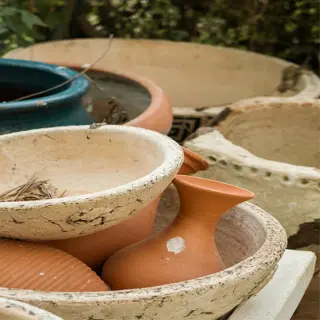
Terracotta Pots
- Porosity: Wicks away excess moisture
- Stacking: Secure with rubber bands between layers
- Usage: Bury pots in sand for root cellar storage
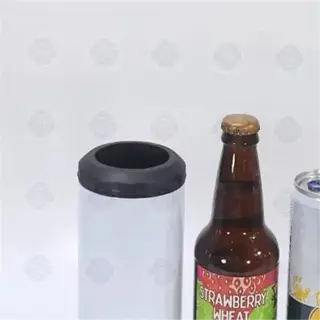
Insulated Coolers
- Temperature Stability: Holds ±5°F of target
- Modification: Drill 1/8" vent holes in lid
- Capacity: 50-qt size stores 100+ small bulbs
Preventing Rot & Ensuring Viability
A relative humidity level above 60% invites fungal rot, particularly with dense clusters of bulbs.Utilize a dehumidifier or silica gel packs depending on where they are stored.I lost a crate of ranunculus to rot due to the high humidity level before I learned this valuable information- I now keep my cellar at 45% humidity year-round!
Check bulbs every two weeks. Rotate them in your hand, as rotting usually starts as soft spots near the basal plate. Last winter, I caught a decaying dahlia tuber early when I realized there was a very faint brown ring others would miss.
Dust edible bulbs naturally with cinnamon or powdered charcoal. Sulfur dust and chemical fungicides kill diseases more quickly but leave a visible residue. For edible bulbs like trivia, I prefer to dust with cinnamon since it is safe even if some remains at planting time.
Airflow gaps are particularly important in dense groupings. Store gladiolus corms in mesh trays stacked in a single layer, not dumped in a pile. One client lost several amaryllis bulbs from black rot. When they spaced the bulbs 2 inches apart, it stopped the spread of the rot and the rest of the bulbs survived.

Digital Hygrometer
- Accuracy: ±2% RH humidity measurements
- Alert System: Programmable 40-60% RH range alarms
- Power: 12-month battery life
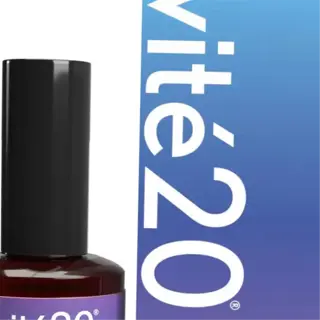
Antifungal Brushes
- Material: Boar hair resists spore retention
- Size: 1.5" width for crevice cleaning
- Sterilization: Boil for 10 minutes between uses

Perforated Trays
- Gauge: 14-gauge steel prevents sagging
- Spacing: 1" between bulbs minimizes contact
- Capacity: 25 standard tulip bulbs per tray
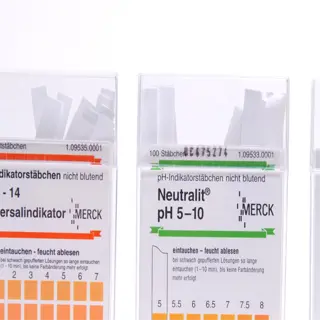
pH Test Strips
- Range: Measures 3.0-8.0 pH levels
- Usage: Test storage medium monthly
- Calibration: Includes reference color chart

Insulated Gloves
- Protection: Withstands −40°F to 200°F (−40°C to 93°C)
- Grip: Silicone palm patches prevent drops
- Care: Hand wash with mild detergent
5 Common Myths
All bulbs must be stored out of light in total darkness to minimize the chances of them sprouting.
Even though darkness delays the sprouting process, many bulbs, such as dahlias, require light exposure to maintain their dormancy cycles, so some indirect light during storage is preferred. Bulbs stored in complete darkness may disrupt their natural systems and, instead of delaying sprouting, lead to premature failures in growth.
Washing bulbs with water before storing them will also help reduce disease.
Water contact removes the natural protective coatings and increases the risk of rot. Bulbs should instead be prepared by gently brushing away soil debris using soft tools and curing them in an area with dry air circulation for 48 hours at a normal room temperature prior to storage.
Airtight plastic containers provide the best protection from an undesirable environment.
Plastic containers trapped humidity and ethylene gas, creating conditions conducive to mold. Use cardboard boxes or mesh bags that allow for 1-2 air exchanges every hour that would stop pests from accessing your bulbs.
Bulbs stored in refrigerators are not monitored.
Refrigerator temperatures alternate when defrosting occurs, which may risk freezing damage. You should check the bulbs weekly for any condensation build-up and change the orientation of the bulbs every 14 days to keep air flowing evenly and evenly around all surfaces.
Older bulbs require warmer storage temperatures than newer bulbs.
Bulb age does not affect the need for storage temperatures, but there are temperature requirements that vary by species. The temperature range for mature cannas would be the same as new cannas - the 50-60F (10-16C) range. Storage temperatures depend on the bulb biology, not date of harvest.
Conclusion
Accurate, or proper, storage promotes bloom quality directly. Bulbs stored in the exact range of temperature and humidity will produce considerably larger and brighter flowers. I have seen clients triple their dahlia blooms after adjusting storage and exposure from 50°F to 45°F; with such a small change you would be surprised how quickly bloom quantity increases. Your patience now translates into abundant vibrancy in the spring.
Establish a storage calendar that is customized to your specific bulb varieties and your last frost date. Gardeners along the coast most often dig bulbs later than gardeners in the mountains. Set your phone alerts for monthly reminders to check on your bulbs. One of my students, a seed farmer, changed her bulbs from white to yellow, to red depending on the species; it resulted in a 70% reduction in rot losses.
Climate for the region dictates strategy. In arid regions, add a damp paper towel to storage boxes. Humid regions will benefit from adding more vermiculite. Clients in Texas refrigerate pre-cooled bulbs, while clients in Vermont store them in unheated basements. Make it yours and don't just blindly follow general advice.
When spring comes back around, check your stored bulbs for firmness, before putting them back in the ground. If they feel shriveled, soak them in water overnight. Use it with a well-drained soil. Last year, a client reused some stored tulips in a raised bed. Their tulips looked much better than everyone else's nursery-bought tulips in the block.
External Sources
Frequently Asked Questions
How do you store bulbs for next year?
After curing bulbs for 1-21 days in a ventilated area, pack them in peat moss or vermiculite. Store in breathable containers like cardboard boxes at 35-50°F. Avoid plastic bags to prevent mold and ethylene gas buildup.
How long do bulbs last unplanted?
Most bulbs remain viable for 6-12 months if stored properly. Maintain consistent temperatures (species-dependent) and 40-50% humidity. Discard bulbs showing mold, soft spots, or excessive shriveling during monthly checks.
Should I cut roots off bulbs before storing?
Trim roots to 1-2 inches but avoid complete removal. Over-trimming damages basal plates. Wait until spring to divide clustered bulbs, as fall cuts increase rot risks during storage.
Where is the best place to store bulbs?
Ideal locations include unheated basements, garages, or root cellars. Ensure the space stays between 35-60°F with moderate humidity. Never store near ripening fruit, which emits harmful ethylene gas.
How do I save my iris bulbs for next year?
Dry rhizomes for 7 days after digging. Remove soil gently without washing. Store in mesh bags with dry sawdust at 40-50°F. Inspect monthly for iris borer larvae or rot.
Do bulbs go bad if not planted?
Yes. Bulbs lose viability if exposed to extreme temperatures or moisture. Signs of spoilage include mold, mushiness, or hollow weight. Healthy bulbs feel firm and heavy for their size.
Will dried out bulbs grow?
Mildly shriveled bulbs can recover if soaked in water for 2 hours before planting. Severely dehydrated bulbs lack the energy reserves needed for sprouting and should be discarded.
When should I dig up bulbs to separate?
Dig after foliage yellows but before the first hard frost. Separate offsets in spring when replanting. Fall division risks infection through fresh cuts during storage.
Can I store tulip bulbs for a year?
Tulips store best at 35-45°F in slightly damp peat moss. Layer bulbs without touching. Discard any with brown lesions, a sign of fusarium fungus.
Is it okay to store bulbs in paper bags?
Yes, paper bags allow airflow while blocking light. Line bags with dry sphagnum moss. Avoid overcrowding, limit to one layer. Replace bags annually to prevent degradation.

